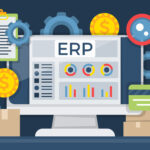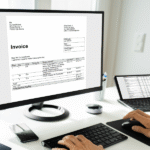Managing expenses incurred by employees on behalf of their employers has always been a crucial part of business operations. With the advent of digital solutions like e-Invoicing, these processes are becoming more streamlined. However, navigating this transition requires understanding the regulations and leveraging the right tools. This blog explores how businesses can simplify employee expense claims while ensuring compliance with new e-Invoicing standards.
As organizations strive for efficiency and transparency, adapting to e-Invoicing is no longer optional but a necessity. It not only reduces administrative burdens but also ensures accurate record-keeping, which is vital for both internal audits and tax compliance. By adopting best practices and leveraging advanced tools, businesses can turn this regulatory shift into an opportunity for improved financial management.
Understanding Employee-Incurred Expenses
Employees often pay for various work-related expenses out of pocket. These include travel costs, accommodation, tolls, parking fees, telecommunication charges, and even expenses incurred during international business trips. While employers typically reimburse these costs, the process requires proper documentation to ensure transparency and compliance with tax regulations.
Failure to properly manage these claims can lead to inefficiencies, delayed reimbursements, and potential compliance issues. For employees, it can mean financial strain if reimbursements are delayed or denied due to incomplete documentation. For employers, inaccuracies or lapses in record-keeping can result in audits, penalties, or strained employee relations. Therefore, establishing a clear and efficient process is crucial for both parties.
The Role of e-Invoicing in Expense Management
E-Invoicing represents a significant shift from traditional paper or PDF invoices to a more structured, electronic format that complies with tax authority requirements. This system enhances accuracy and simplifies tracking. For employee expense claims, e-Invoicing ensures that every transaction is documented and verifiable, reducing the likelihood of discrepancies.
Additionally, e-Invoicing facilitates real-time data sharing between employees, employers, and tax authorities, which helps streamline the reimbursement process. It reduces the administrative workload by automating record-keeping and reconciliation, allowing finance teams to focus on more strategic tasks. This level of automation and transparency also strengthens compliance with regulatory requirements, ensuring that businesses avoid costly errors or penalties.
IRBM’s Concession for Employee Expense Claims
The Inland Revenue Board of Malaysia (IRBM) acknowledges the practical difficulties employees face in obtaining e-Invoices under their employer’s name. To address these challenges, IRBM offers specific concessions:
- Acceptance of e-Invoices Issued in the Employee’s Name
If an e-Invoice cannot be issued in the employer’s name, IRBM allows the use of e-Invoices issued to the employee for tax purposes.
- Acceptance of Foreign Receipts for Overseas Expenses
For expenses incurred abroad, employees and employers are not required to issue self-billed e-Invoices. Instead, IRBM will accept foreign receipts or similar documentation as valid proof of expense.
Step-by-Step Guide to Submitting Employee Expense Claims
Navigating the expense claim process requires employees to follow a structured approach. Here’s a step-by-step guide to ensure compliance and efficiency:
Step 1: Verifying e-Invoice Issuance
Employees should first confirm with the supplier whether an e-Invoice can be issued in the employer’s name. This step is crucial for ensuring proper documentation and minimizing potential tax issues.
Step 2: Providing Employer or Employee Details
If the supplier cannot issue an e-Invoice to the employer, employees should provide their details to have the e-Invoice issued in their name. This ensures that the transaction is still documented correctly.
Step 3: Payment Process
Once the validated e-Invoice is issued, employees proceed with the payment. This documentation serves as proof of the expense incurred on behalf of the employer.
Step 4: Submitting Expense Claims
Employees must submit their validated e-Invoices—whether issued in the employer’s or their own name—along with other supporting documents to their employer for reimbursement.
Best Practices for Employees and Employers
To ensure a smooth expense claim process, both employees and employers should adopt certain best practices:
- Maintain Clear Communication: Employees should inform suppliers about the need for e-Invoices under the employer’s name whenever possible.
- Keep All Documentation: Employees must retain all receipts, invoices, and related documents to support their claims.
- Use Digital Tools: Employers can leverage expense management platforms to simplify the approval and reimbursement process.
- Set Clear Policies and Guidelines: Employers should establish comprehensive expense policies that outline permissible expenses, documentation requirements, and reimbursement timelines. Clear guidelines help minimize misunderstandings and ensure consistency across the organization.
- Provide Training and Support: Employers should offer training sessions to help employees understand the e-Invoicing process and their role in it. A well-informed workforce is better equipped to comply with company policies and regulatory requirements.
- Regularly Audit and Review Claims: Employers should periodically audit expense claims to ensure accuracy and compliance. This helps identify any discrepancies early and provides an opportunity to refine processes for better efficiency.
Leveraging Technology for Seamless Expense Management
Technology plays a vital role in modern expense management. Platforms like Advintek help businesses manage employee expense claims efficiently by integrating e-Invoicing features. These solutions streamline the documentation, approval, and reimbursement process while ensuring compliance with regulatory requirements.
In addition to e-Invoicing integration, advanced expense management platforms offer features such as automated policy enforcement, real-time analytics, and customizable approval workflows. These tools not only enhance accuracy but also provide valuable insights into spending patterns, helping organizations optimize their budgets and identify cost-saving opportunities. By leveraging such technology, businesses can foster a more transparent and efficient financial ecosystem.
The Future of Employee Expense Management
As regulatory frameworks evolve, the adoption of e-Invoicing will become more widespread. Emerging trends such as artificial intelligence and real-time data integration are set to further enhance expense management. Advintek remains at the forefront, continuously updating its solutions to meet the changing needs of businesses.
The future of expense management is poised to bring several transformative developments:
- AI-Powered Expense Automation: Artificial intelligence will play a crucial role in automating routine tasks such as invoice matching, policy compliance checks, and fraud detection, significantly reducing manual intervention.
- Real-Time Data Integration: Expense management platforms will increasingly integrate with other business systems, providing real-time visibility into company finances and enabling faster decision-making.
- Blockchain for Enhanced Transparency: Blockchain technology could revolutionize expense management by creating immutable records of transactions, ensuring greater transparency and security.
- Mobile-First Solutions: With a growing emphasis on remote work, mobile expense management tools will become essential, allowing employees to capture and submit expenses on the go.
By staying ahead of these trends, businesses can optimize their expense management processes, improve financial oversight, and maintain compliance with evolving regulations.
Conclusion
In an increasingly digital world, managing employee expenses effectively is crucial for maintaining operational efficiency and compliance. Advintek offers comprehensive e-Invoicing solutions that simplify expense claims, reduce administrative burdens, and ensure regulatory adherence. By choosing Advintek, businesses can focus on their core operations while leaving the complexities of expense management to a trusted partner.









